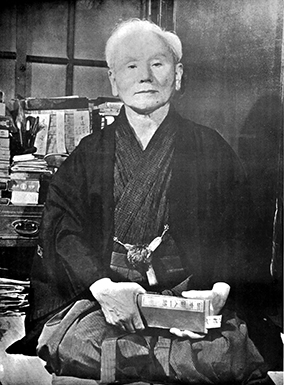Shotokan Karate-Do

Karate is a Japanese word meaning, in its simplest terms, ‘Empty Hand’. It is a system of fighting designed to be used in defense against unarmed and/or armed opponents, in which the Karate practitioner (Karate-ka) uses nothing more than his own body parts. Karate should never be used in aggression.
As Shotokan founder Gichin Funakoshi (1868-1957) described it, karate is a way of life; it will aid its practitioners on their way through life, thereby making him or her a better person. A superior personality along with great moral and physical improvement can be accomplished through the proper practice of Karate. ‘Do’ in Japanese means ‘the way’. Hence, Karate-Do.
Originating in China, Karate was first referred to as ‘Chinese Hand’. Mr. Funokoshi, however, changed the characters to employ the meaning, ‘Empty Hand’. But the essence of the term is deeper than the literal definition of the words. Mr. Funokoshi chose the characters for their meaning in Zen Buddhist Philosophy. Rendering oneself empty is one way to interpret them. The Karate practitioner must first be void of any conflicting ideas or, in other words, have a mind that is empty and ready to receive the appropriate instruction. Through proper, disciplined and often intense physical Karate training, the practitioner will naturally form a strong character and develop emotional well-being.
Karate can be broken down into four categories:
- Budo
- Physical Education
- Self-Defense
- Sport
Karate as Budo
To those who practice Karate, it is a form of martial art, but more importantly it is a form of human development through which we can change our habits, become more valuable to our community, as well as to everyone we touch in our daily lives. In order for us to be better able to compete in this fast moving world of ours, we must learn discipline. We must learn patience and we must have the endurance needed to help keep us motivated to overcome life’s many obstacles.
Karate as Physical Education
As a form of physical education, karate is unparalleled. Many sports, when practiced, will develop one part of the body or another. This is not so in karate. Because of the wide variety of techniques practiced in this martial arts discipline involve all parts of the body, the karate-ka will develop a very well-balanced and overall coordinated body.
Karate as Self-Defense
Almost every part of the body can be used in Karate, providing it is properly trained. For example, the hand itself can be used many ways:
- Punching straightforward or in a circular manner.
- Delivering a back fist strike using the back of the fist.
- A hammer fist strike using the bottom part of the fist.
- A knife hand block or strike using the knife-edge of an open hand.
- The first three fingers, drawn tightly together on the open hand, can be used for spearing.
Elbows and knees can be used very effectively for in-close fighting. There are also a number of kicking techniques in Karate, such as the front kick and roundhouse kick, where the ball of the foot is used as the weapon. In side snap or side thrust kicks, the edge of the foot is used.
Unlike some other forms of self-defense, a Karate-ka hardly ever comes into contact with her opponent, until she is ready to deliver her punch, strike or kick. This of course gives her a definite advantage.
Karate as Competitive Sport
Shotokan Karate, in addition to being a superb form of self-defense and exercise, is an exciting sport. Basically there are two types of events in a karate contest; Kumite and Kata. Kumite is free-style fighting, but attacks are stopped just short of contact, to avoid obvious potential injury. Kata are formal exercises made up of karate techniques performed in set sequence. Originally intended to be used by the karate-ka to practice alone, katas consist of all types of karate techniques, such as blocking, punching, kicking, striking and various body shifting tactics. Katas are based on imaginary opponents numbering from four to eight, attacking from all directions. There are more than 50 katas. Some are relatively simple; others are quite complex, requiring a high degree of skill. Many consider the mastering of kata to be the true essence of karate.
FURTHER READING:
General and Foundational Texts
- Karate-Do: My Way of Life, by Gichin Funakoshi
- The Twenty Guiding Principles of Karate: The Spiritual Legacy of the Master, by Gichin Funakoshi, Jotaro Takagi, and John Teramoto
- Dynamic Karate, by Masatoshi Nakayama
- Notes on Training, by Tsutomu Ohshima
- Best Karate Vol I, and Vol II, by Masatoshi Nakayama
- Karate-do Kyohan, by Gichin Funakoshi
- Karate-do Nyumon, by Gichin Funakoshi
Kumite
- Karate Fighting Techniques: The Complete Kumite, by Hirokazu Kanazawa
- Best Karate Vol 3, and Vol 4, by Masatoshi Nakayama
Kata
- Best Karate Vol 6 – 11, by Masatoshi Nakayama
- 25 Shotokan Kata, by Shojiro Sugiyama
- Karate: The Complete Kata, by Hirokazu Kanazawa
